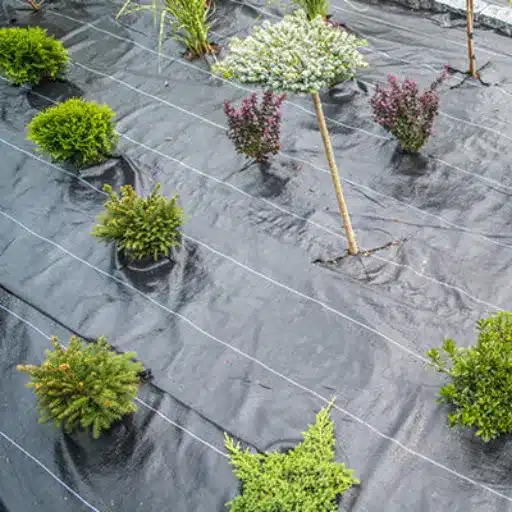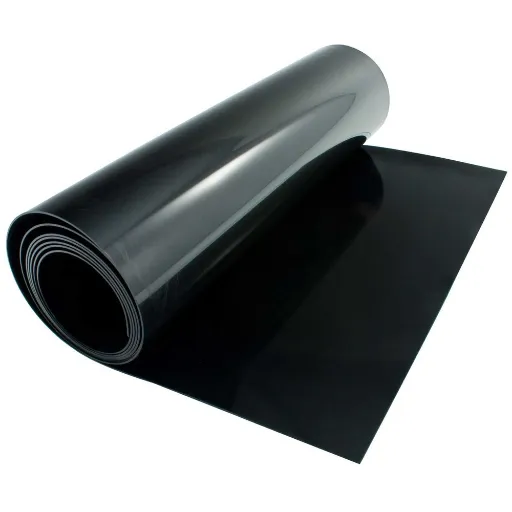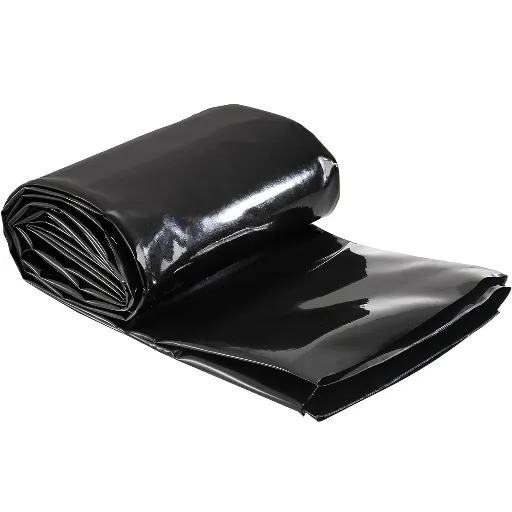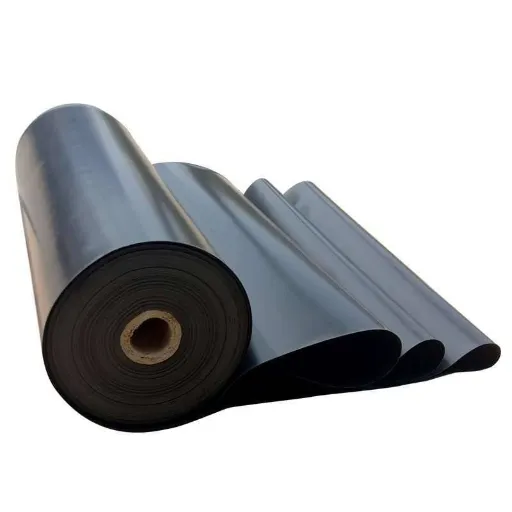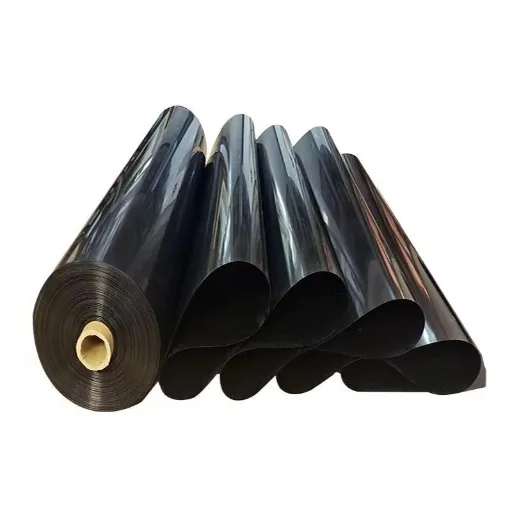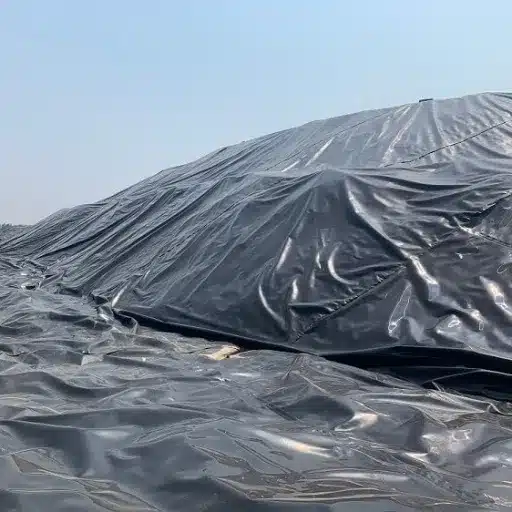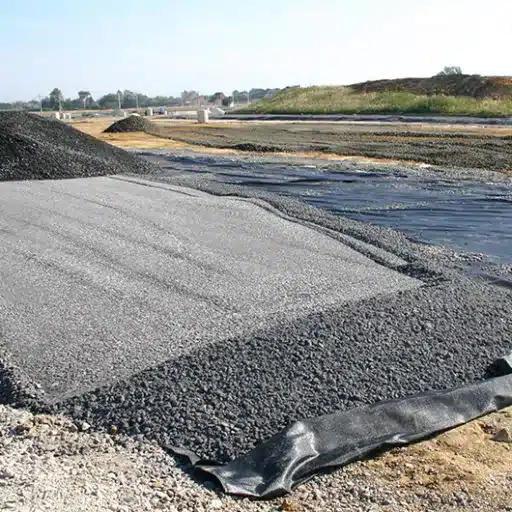One of the more stubborn weed control problems garden and landscape designers have to deal with. At the onset, weeds compete with your plants for all-important nutrients and water, thus spoiling the landscapes. Landscape fabric steps in to fill that need. Designed to act as a dependable barrier, this garden instrument keeps weeds at bay so that healthier soil and cleaner garden beds can be promoted. This article shall provide an insight into the best landscape fabric options for weed control by weighing their benefits, features, and suitability for various gardening needs. Whether you are a seasoned green thumb or just trying to find easy solutions, this guide will ensure an informed choice resulting in a clean and cultivating garden.
Understanding Weed Barrier Landscape Fabric
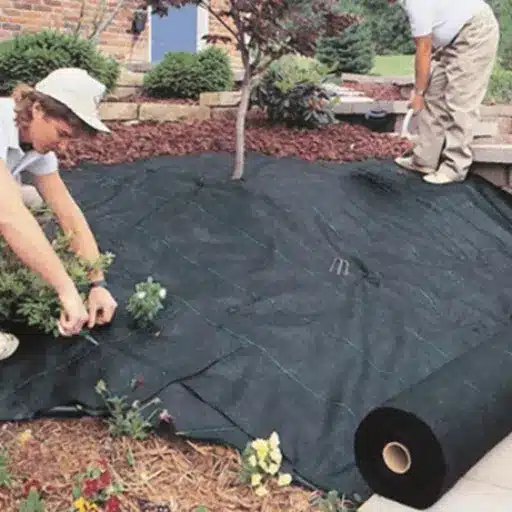
I find weed barrier landscape fabric an excellent tool for weed control and to keep the gardens clean and healthy. It blocks sunlight away from weeds, preventing their growth while still allowing water and nutrients to reach the soil. It is, therefore, a dependable and low-maintenance solution for every gardener regardless of skill level.
What Is Weed Barrier Fabric?
Weed, or landscape fabric, is a permeable material that is strong enough to act as a blockade to weed growth while keeping water and nutrients penetrating down into the soil. Weed barrier fabric is fabricated out of polypropylene, polyester, or other synthetic fibers, and is usually used in lawns, gardens with mulches, or for general landscaping purposes to reduce maintenance-needed in the fight against weeds.
Key Statistics & Features:
- Weed Reduction: Up to 90% when properly installed and maintained
- Professional Grade Weight: Approximately 5 oz/sq yd for optimal strength and longevity
- UV Resistance: Quality fabrics include UV-resistant coating for years of sun exposure
- Environmental Benefits: Reduces the need for chemical weed killers
Designed to survive and undergo wear and tear in the harshest of conditions while in service, modern weed barrier fabrics provide a good balance between durability and functionality. Quality fabric is colored with a UV-resistant coating so that exposure to sunlight would not break it down for years. It comes in different weights depending on the use, for example, lightweight for flower beds and heavy-duty for driveways or bigger landscaping projects.
Statistics from the market and experts in botany show that weed growth can be cut down by an estimated 90% with weed barrier fabric, provided it is well installed and maintained. It likewise reduces the application of chemical weed killers, making it an environmentally friendly method favored by gardeners and landscapers. Additionally, some fancy types have grid patterns printed on the surface, which further makes it easier to align and cut the fabric for planting rows or decorative patterns.
How Weed Barriers Suppress Weeds
These barriers give a physical block between the soil and sunlight, thereby keeping the growth of coarse plants from them. Most weeds do need sunlight to germinate and thrive. With the installation of any weed barrier, such as woven fabrics, non-woven geotextiles, or even biodegradable types, the barrier blocks sunlight from interacting with the soil and stopping weed growth.
Performance Data
Studies have proven that good-quality barriers decrease weed growth by as much as 90% and considerably reduce labor and herbicide use in the longer run.
Longevity
Woven landscape fabric is estimated to last for as long as five to seven years when well installed and is very cost-effective.
Unlike others that enhance soil warming and drying, modern weed barrier fabrics are designed to protect the soil. Most of these materials are breathable to let water and air pass through so as to nourish the roots of plants on the soil underneath.
💡 Pro Tip: Enhanced Effectiveness
Weed barriers become more efficient when coupled with mulches. A covering of mulch on top of the fabric can act as an added weight to hold it down and block sunlight that might otherwise find its way through tiny holes or defects in the barrier. Agronomic data shows that combination systems (fabric with mulch) can extend weed control performance by 30% compared to that offered by fabric alone.
Top Features to Consider in Landscape Fabric
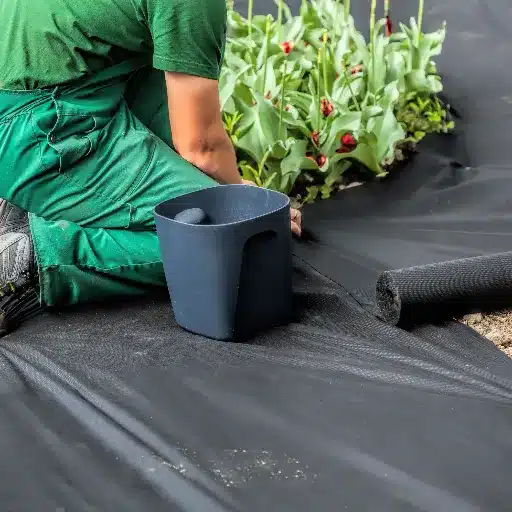
When I am selecting landscape fabric, I consider durability, UV resistance, and permeability. A durable fabric implies that it can withstand wear over time; UV resistance prevents breakdown by sunlight, while permeability permits water and air to reach the soil.
Material Quality and Durability
When selecting landscape fabric, material quality and durability must be the two main deciding factors. The best-quality fabrics are generally made from either woven or non-woven polypropylene or polyester, as these materials give good tensile strength and excellent resistance to tearing.
| Fabric Type | Durability | Best Use |
|---|---|---|
| Woven Polypropylene | Up to 5 years with UV coating | High-traffic areas, paths |
| Non-woven Polypropylene | Shorter lifespan, better filtration | Flower beds, moss control |
| Heavy-duty (6+ oz/sq yd) | Maximum durability | Driveways, gravel paths |
Weight Recommendations:
- 3-5 oz per square yard: Best for most landscaping projects (optimal balance of durability and handling)
- 6+ oz per square yard: Heavy-duty applications (gravel paths, driveways)
- Puncture resistance: Look for fabrics exceeding 140 pounds for protection against sharp rocks and tools
Recent studies suggest that woven polypropylene fabrics retain structural integrity for up to 5 years under direct sunlight if incorporated with UV-resistant coatings. However, non-woven types, while they might last less in high-traffic areas, tend to be better at filtering water and work best in moss control.
Permeability and Water Drainage
In selecting landscape fabric, permeability and water drainage are the major factors to be considered. Good-quality landscape fabric should allow water and air in but disallow weed germination; thus, carving the route for adequate nourishment and hydration of plants and soil underneath for their balanced development.
2+
Gallons per sq ft per minute
Minimum recommended
5
Gallons per sq ft per minute
High-tech fabric performance
Data from recent years hold that the new and high-tech woven and non-woven landscape fabrics give permeability rates of up to 5 gallons per square foot per minute, thus being highly efficient in providing adequate drainage. That, in turn, makes great drainage a way to prevent the occurrence of water pooling and hence root rot and other inconveniences to the flesh of plants. Proper installation of landscape fabric with slight tension, formed across the landscape surface, would allow water to flow evenly through the landscape fabric.
Advantages of Weed Block Fabric
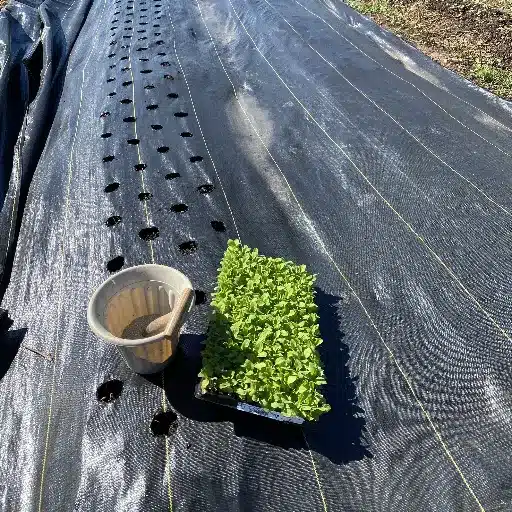
The weed block fabric is my means of preventing weed growth without compromising drainage for my plants. It ensures a low-maintenance and durable landscape for healthy development of the plants without any chance of water pooling or erosion.
Maintaining a Weed-Free Garden
A well-maintained, weed-free garden beautifies your outdoor area, providing healthier growth for plants because plants competing for nutrients, water, and sunlight are minimized. Using a quality weed block fabric is a perfect first line of defense. Some studies have shown that weed block fabrics, if installed correctly, could keep weeds at bay by 90%, so gardeners may spend less time weeding and more time enjoying their gardens.
🌱 Best Practices for Maximum Effectiveness
- Mulch over the weed block fabric to minimize weed growth further and protect soil moisture
- Avoid leaving gaps intentionally or unintentionally – even tiny areas can become nurseries for invasive plants
- Combine hand-weeding with barrier methods for thorough removal with less weed reappearance
- Consider pre-emergent herbicides alongside weed block fabric for larger gardens with aggressive weeds
Soil Health and Nutrient Retention
Well-maintained soil is essential for healthy plant growth and a flourishing garden ecosystem. Healthy soil essentially anchors nutrient retention, water absorption, and plant growth. According to contemporary studies, soil organic matter further plays an essential role in helping to improve soil structure and its ability to retain nutrients.
Soil Health Benefits:
- Water & Nutrient Retention: Soil with over 5% organic matter can retain 20% more water and nutrients than degraded soil
- Optimal pH Range: Maintain soil pH between 6.0 and 7.0 for most plants
- Microbial Activity: Essential for breaking down organic matter and releasing nutrients (nitrogen, phosphorus, potassium)
To maintain soil health, consider compost, aged manure, or natural mulch. These materials not only improve soil nutrients but also provide an environment for beneficial microorganisms to reside. Soil science suggests that microbial activity is necessary for the breakdown of organic matter, releasing nutrients such as nitrogen, phosphorus, and potassium into forms that can be absorbed by plants.
Expert Tips on Installation and Maintenance
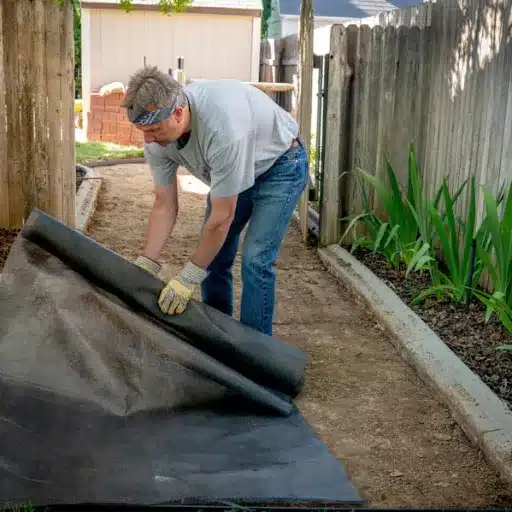
Preparing the Area
The area must be prepared properly before the application of the geotextile to maximize its effectiveness and provide an efficient long-term solution. Being considered as a matter of best practice, here are the steps and aspects which must be taken into account:
📋 Site Preparation Checklist
1. Site Assessment and Clearing
Upon arrival at the site, conduct a thorough inspection and check for the presence of obstacles such as boulders, vegetation, or debris. Clear them away to have a smooth and stable surface on which to lay the geotextile fabric.
2. Excavating or Grading
Excavation or grading shall now be undertaken until the level and final contour are made ready as per requirement. For road construction works, an excavation of 12-24 inches minimum is generally recommended for proper base layering. A smooth grade ensures uniform contact between geotextile and subgrade.
3. Compacting the Subgrade
The subgrade is to be compacted to improve soil bearing capacity and reduce settlement. Studies show approximately 40% improvement in structural stability with a well-compacted subgrade.
4. Water Drainage
Proper drainage facilities should be ensured to avoid water collection. Poor drainage creates hydrostatic pressure that disturbs geotextile functioning.
Correct Installation Methods
Geotextiles inserted well guarantee their maximum effectiveness and lifespan. The following is a step-by-step installation technique using all current best practices and research:
🔧 Installation Steps
- Surface Preparation: Ensure the surface is free from debris, big stones, roots, and obstructions. A smooth and stable surface prevents punctures and facilitates even geotextile layer.
Note: Uneven surfaces account for 15-20% of reported geotextile damage cases.
- Unrolling and Placing: Unroll carefully along the release direction, avoiding wrinkles or folds. Align according to project design parameters, considering thickness and overlap requirements.
Overlap Range: 12-24 inches depending on slope and load-bearing conditions.
- Securing the Geotextile: Use anchor pins or staples before backfilling in areas with heavy wind or traffic. Drive anchors at 3-5 feet intervals for proper fastening.
Steeper Slopes: Increase anchor density for better security.
- Overlap Layers with Sealing: Properly overlap and seal joints to prevent water seepage and structural failure. For high-stress applications, render joints watertight with adhesive tape, heat sealing, or stitching.
- Backfill and Compacting: Spread backfill materials evenly without creating sharp pressure points. Mechanically compact fill material for uniform pressure throughout.
Benefit: Proper compaction achieves 50% better load distribution, improving geotextile performance.
Maintenance Tips for Long-Lasting Use
The geotextiles are maintained to extend their longevity and gain maximum functionality. Here are detailed guidelines and the best practices to secure their lifespan:
🔍 Routine Inspections
Regular visual inspection should be conducted, looking for signs of wear and tear such as rips, punctures, or frayed edges.
🧹 Debris Management
Monitor for debris accumulation from soils, plants, or sediments that may restrain permeability.
🌊 Erosion Control
Address erosion issues immediately, as intense rainfall may expose or displace geotextiles.
⚖️ Load Management
Ensure applied loads stay within design limits to prevent diminished effectiveness and failure.
Reference Sources
-
The Spruce:
- Highlights the ECOgardener Garden Weed Barrier as the best-tested landscape fabric for its versatility, lightweight design, and effectiveness.
- Read more on The Spruce
-
Sandbaggy:
- Recommends using a woven landscape fabric that is at least 3 oz thick and UV-resistant for general weed barrier applications.
- Visit Sandbaggy
-
Heirloom Soul:
- Features the Dewitt brand landscape fabric as a heavy-duty, commercial-grade option ideal for preventing weeds in driveways and other areas.
- Explore Heirloom Soul
Frequently Asked Questions (FAQs)
❓ What type of landscaping fabric would be finely suspended for the prolific weed growth?
Into being prohibitive, the most suitable landscape fabric would be the heavy-duty variety. This environment is one of fabrics and molecules that allow durability against nature-laden storms and the abuses of foot traffic, thus inhibiting weed development; it must be, however, easy to cut to size and fit around existing plants.
❓ Can plastic sheeting be used as a garden landscape weed barrier?
Plastic sheeting can temporarily block weeds; however, it does not offer the best in protection as a garden landscape weed barrier. Contrarily, plastic sheeting does not let water and air go through it, thus causing bad soil health. Woven or nonwoven fabrics designed for weed suppression would be a better choice in gardens.
❓ How does one install a woven weed barrier in a garden?
Installation of a woven weed barrier in a garden begins with preparing the soil by pulling out any weeds present. Cut the fabric to match the area and ensure that all ground is covered. Use landscape or garden staples to attach the fabric to the soil to prevent it from moving. Lastly, for a greater effect and beauty, mulch the fabric.
❓ What are some of the benefits of a ground cover weed barrier?
The ground cover weed barrier has several benefits: it cuts down on the growth of weeds and retains moisture in the soil. This barrier works toward creating a weed-free environment while letting water and air enter into the soil, helping sustain healthy growth of plants, trees, and shrubs.
🌱 Ready to Transform Your Garden?
Choose the right landscape fabric for your needs and enjoy a low-maintenance, weed-free garden that thrives year-round. Remember: proper installation and maintenance are key to maximizing your investment!

